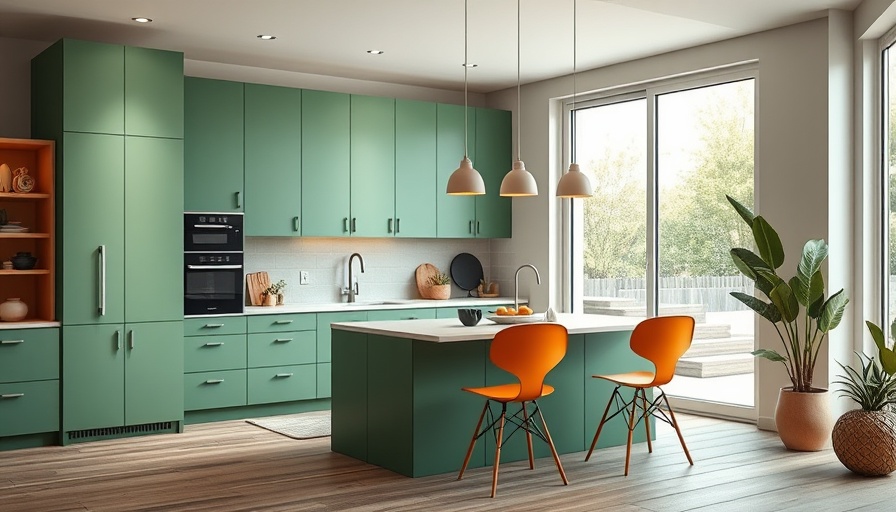
Unleashing Creative Energy: March into April with Design
As we step into April, it’s the perfect time to refresh our homes, embrace vibrant colors, and channel new design energy. From Ikea’s standout spring releases to innovative gardening techniques, this month is bursting with inspiration for every homeowner keen on transforming their space.
Embracing Color: The Key to Invigorated Spaces
Color can make or break an environment. A vivid example comes from the Marvila House in Lisbon, featuring a blend of green-painted panels and blue industrial flooring. This bold design choice encourages homeowners to break away from conventional palettes and explore their creative side. Whether it's painting an accent wall or selecting furniture with character, incorporating lively hues could enhance your living area dramatically.
Hybrid Horticulture: The All-in-One Wonder
Ever dreamt of having a garden laden with various fruits? The innovative hybrid fruit tree is a game-changer for gardening enthusiasts. This miraculous plant allows you to grow plums, cherries, almonds, and even a King George IV peach all from one tree. Not only is this space-efficient, but it also brings exciting biodiversity to your garden, making it a delightful project for both novice and seasoned gardeners.
Learning from the Best: Workshops to Elevate Your Skills
On May 18th, the New York Botanical Garden (NYBG) will host a workshop led by Margot, known for her stunning botanical flatlays. This event presents a unique opportunity to learn from an expert and discover the secrets behind visually compelling plant arrangements. Such workshops not only enhance your knowledge but also inspire you to experiment within your own home gardening projects.
Celebrating Nature: Engaging Online Symposiums
The Native Plant Trust is organizing an online symposium highlighting discussions featuring renowned plantspeople such as Uli Lorimer and Edwina von Gal. Their wealth of knowledge on native plants emphasizes the importance of incorporating local flora into our gardens for both ecological balance and aesthetic enjoyment. Attending such events connects us with a community passionate about environmental sustainability and cultivates our understanding of biodiversity.
Spring Sales: Revamping Spaces on a Budget
If you're in need of a home makeover without breaking the bank, don't miss the spring sale at Area, running from April 14-21. Their discount of 40% on select discontinued collections might be the perfect chance to refresh your home’s aesthetic with new finds that wouldn’t typically fit within your budget. Combining strategic shopping with savvy design can lead to stunning transformations without the hefty price tag.
Indoor Inspirations: Light Coverage with a Twist
One of the latest design trends fans are raving about is clever light fixture cover-ups, now with kid-approved versions. These not only serve a practical purpose but also add a playful element to spaces, making them perfect for families. Whether it's a whimsical lamp or fun shades, these options enhance a room’s personality while keeping safety in check.
A Look Ahead: What’s Trending in Home Design
Mark your calendars for the upcoming Salone del Mobile, where design creativity takes center stage. Engaging with the latest trends, such as Laila Gohar’s collaboration with Marimekko, will undoubtedly inspire new projects at home. Exploring fresh trends fuels innovation, propelling homeowners to think beyond traditional ideas and tailor their spaces truly unique to their preferences.
Conclusion: Build Your Own Design Journey
Whether you're embracing daring color choices, participating in enriching workshops, or smartly shopping during seasonal sales, the opportunities for home renewal are endless. Each choice you make not only beautifies your space but also reflects your personality and ethos. So roll up your sleeves, get involved, and let your home become a canvas for your creativity and vision!
 Add Row
Add Row  Add
Add 




Write A Comment